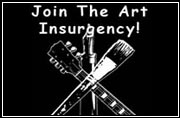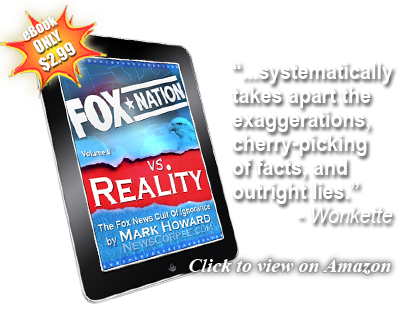 In its many forms, movies, books, music, etc., art entertains, enlightens, challenges and comforts us. We encounter it in virtually every waking moment, if not in the creative aspect, then in the commercial. We transform the creators into objects of desire and curiosity. Creativism, the pursuit of truth through expression, in one way or another consumes more of our consciousness than any other activity of life not directly associated with survival.
In its many forms, movies, books, music, etc., art entertains, enlightens, challenges and comforts us. We encounter it in virtually every waking moment, if not in the creative aspect, then in the commercial. We transform the creators into objects of desire and curiosity. Creativism, the pursuit of truth through expression, in one way or another consumes more of our consciousness than any other activity of life not directly associated with survival.
And yet, the past decade has seen an unsettling evolution of thought with regard to the artist’s place in society. That place has increasingly become a wobbly axis of discord. Painters, poets, actors, authors and musicians are battered and belittled for doing nothing more than what they were born to do: express themselves. While the artist’s contribution to the world community was once valued for its conscience and vision, in recent years it has depreciated and even become a liability.
Now there has arisen a class of self-appointed, civic hall monitors who believe that they can decide who passes through the corridors of free expression. These martinets of virtue want artists to repress their natural inclination to share their insight and their soul. Emblematic of this trend is the book by censorious pundit Laura Ingraham, “Shut Up and Sing.” The publisher touts the book for exposing, “the outrageous howlers and muddled thinking peddled by a rogues’ gallery of Hollywood celebs…” This view has infected modern society and is propelled by critics, moralists and pseudo-patriots whose shallowness demands that artists be nothing more than amusements. They must certainly never make us think or feel.
I’m sick and tired of limp-brained gasbags like John McCain saying, “Do I know how to sing? About as well as she [Barbra Streisand] knows how to govern America!”. The obvious extension of that thought is that anyone who does any job other than serving in Congress is unqualified to have an opinion about what our government does in our name. Just try changing the word “sing” with the word “farm” or “teach” or “weld.” This is unadulterated elitist bullshit. If we’re qualified to vote them into office, then we’re qualified to comment on the job they are doing.
When did this happen? How did artists come to be assaulted for having opinions and the courage to express them? That is, in fact, their strength and purpose. Throughout history it was artists who shaped the character of our culture. It was artists who illustrated our spiritual quests; documented our humanity; exposed our flaws; inspired us to repair them. The enlightened observations they shared were like medicinal potions. They were sometimes caustic, but they always served to heal. Today, merely being controversial (a side effect of honesty) subjects the artist to condemnation and ridicule from the ranks of the cultural imperialists.
This is not happening by accident. There is a deliberate campaign to denigrate artists due specifically to their ability to communicate. Popular artists are natural targets because their popularity increases the volume of their voices. Thus we find artists, whose work was once profound enough to enrich our lives, are disparaged for employing that same vision to touch our lives in ever more meaningful ways.
By silencing the voices of creativism, the ruling class seeks to dominate an inconvenient public. The McCarthyites did it to the Hollywood 10, and they’re doing it still. They don’t even try to be subtle. An example:
In January of 2003, shortly before the U. S. invasion of Iraq, Colin Powell assembled the media at the United Nations to comment on his presentation. But before the media arrived, the tapestry of Picasso’s masterpiece, Guernica, was covered by a blue drape. A press conference to discuss launching an unprecedented war of aggression could not be held in front of one of the twentieth century’s most moving anti-war statements.
The symbolism of literally throwing a blanket over this representation of truth is unmistakable. They know the power of art – and they fear it. Another example:
Shortly after 9/11, Clear Channel Communications, the world’s largest radio conglomerate, distributed a list of 164 songs they deemed inappropriate for airing. The list bordered on the absurd, including:
- Louis Armstrong – “What A Wonderful World”
- Buddy Holly and the Crickets – “That’ll Be The Day”
- Carole King – “I Feel the Earth Move”
- John Lennon – “Imagine”
- Frank Sinatra – “New York, New York”
And in a master stroke:
- Rage Against The Machine – All Songs!
The time has come to restore the dignity of creativism. We must beat back the repressive forces that would prefer the Dark Ages to the Renaissance. We must recognize the power that speaking the truth brings to our world and ourselves. We must support our creative advocates. They are more reliable as leaders than their political counterparts. Too often, the politician’s voice is reduced to platitudes for fear of alienating a listener. The artist’s voice, unencumbered by these fears, is more likely to resonate with independence and honesty.
Every great social movement was fueled in part by the arts – from the Napoleonic era Disasters of War by Goya, to the guerilla postering of Robbie Conal. The art insurgency is latent now, but it is strong and committed. Like other insurgencies, it blends in with the populace and can strike with fierce and startling force. It stockpiles its weapons of mass construction for the building of consensus and passion and hope.
Now is the time to reignite creativism for social progress. A new generation of artists is already engaged. But they need to be embraced by the political actors – the campaigners and strategists; the wonks and activists; the publicists and what’s left of the independent media. Those that presently grip the reins of our society know the strength with which art speaks, and they are doing their best to suppress it. We must not leave them alone on that battlefield.

